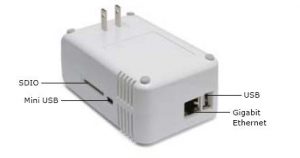Virtualization is an emerging area that is making a significant change in enterprise infrastructure planning, implementation and operation. The pressure comes from several areas. First, the operating costs of even a small business can be dramatically impacted with Virtualization. Secondly, even a small enterprise is planning for “disaster recovery” and “business continuity” in the event of an emergency that renders existing systems unavailable. Virtualization offers clear solutions to each of these issues. Voice is now regularly deployed as an application, running over existing data networks and usually requiring one or more dedicated servers.
Lets tackle the issue of operating costs first. Assume that you have a typical server deployment that includes an Active Directory server, an Exchange Server, a File server and a Call Manager Voice server for your VoIP over IP system. Each of these servers requires at least one AC outlet. Each server has a Network Interface Card that will eat up at least one switch port on your Ethernet switch. How much heat does a server throw off? Air conditioning a server room is not cheap. If you could reduce this server configuration down to a single AC outlet and one Ethernet switch port, would that be an example of “green”?
We wanted to experiment with ShoreTel as a virtualized solution. Version 11 of ShoreTel now supports virtualization. We wanted to kill several birds with one lab study. The birds we were interested in learning about were CISCO/ShoreTel competitive analysis; ShoreTel as a Virtualized solution and VSphere Converter for a Physical to Virtual (P2V) clone!. Currently we are running VMware Sphere as a VMXi solution for our virtualization platform. We have successfully brought up an complete CISCO Unified communications solution, including the CISCO UCCX Contact Center, CUPS the CISCO presence server and CISCO Unity Connector for Voice Mail. It is interesting to note that as of version 7 of CUCM, CISCO does not yet support virtualization. It runs, but you will not be able to get CISCO support on the product.
We then compared a similar ShoreTel configuration. We set up a ShoreTel HQ server, with a ShoreTel DVM and an ECC running on the DVM. To deal with presence we implemented Microsoft OCS as a virtualized server as well. In future blogs, given your feed back and expression of interest, we plan to show CISCO and ShoreTel implementations of similar enterprise requirements. In this way you can see how the ShoreTel and CISCO configurations would be implemented to achieve the desired implementation.
Lastly, we wanted to experience the process of cloning a physical machine. Arthur C Clarke, developed three laws of prediction. Law number three is applicable here: “Any sufficiently advanced technology is indistinguishable from magic”. The process of converting a real, physical, still running server into a virtual “clone” is absolutely magic! We download a copy of VMware ‘s VCenter converter. This software is astonishing. Once installed you basically say through command line instructions: “go to my ShoreTel HQ server and copy it to my VMXi server”. It took approximately 1 hour and 45 minutes, but the process completed flawlessly. The VMXi server had a complete clone of the ShoreTel HQ server and with modest modification it ran immediately. Clearly, you don’t want two HQ servers running on your network, so be careful to deal with this issue and the issue of conflicting IP addresses.
Ethics, Digital Rights, licensing and Copy write law issues aside, it is very possible to clone your ShoreTel server and run it in a virtualized environment. In fact we have taken to backing up our ShoreTel system as a Snapshot on a DVD. As a virtual machine, you can either Snapshot the machine, or suspend your running machine. Thanks to the magic of VMWi you can actually “move” your running machine to a new site while it is still in operation! Basically, we can bring up an entire ShoreTel server in approximately 3 minutes, the time it takes to load the Virtual machine image. There is a video that accompanies this blog and in it we show you the process of bringing up ShoreTel as a Virtual Machine and how to clone an existing machine using P2V software. As always, send your comments to DrVoIP@DrVoIP.com and we will do what we can to respond to your questions and comments!
